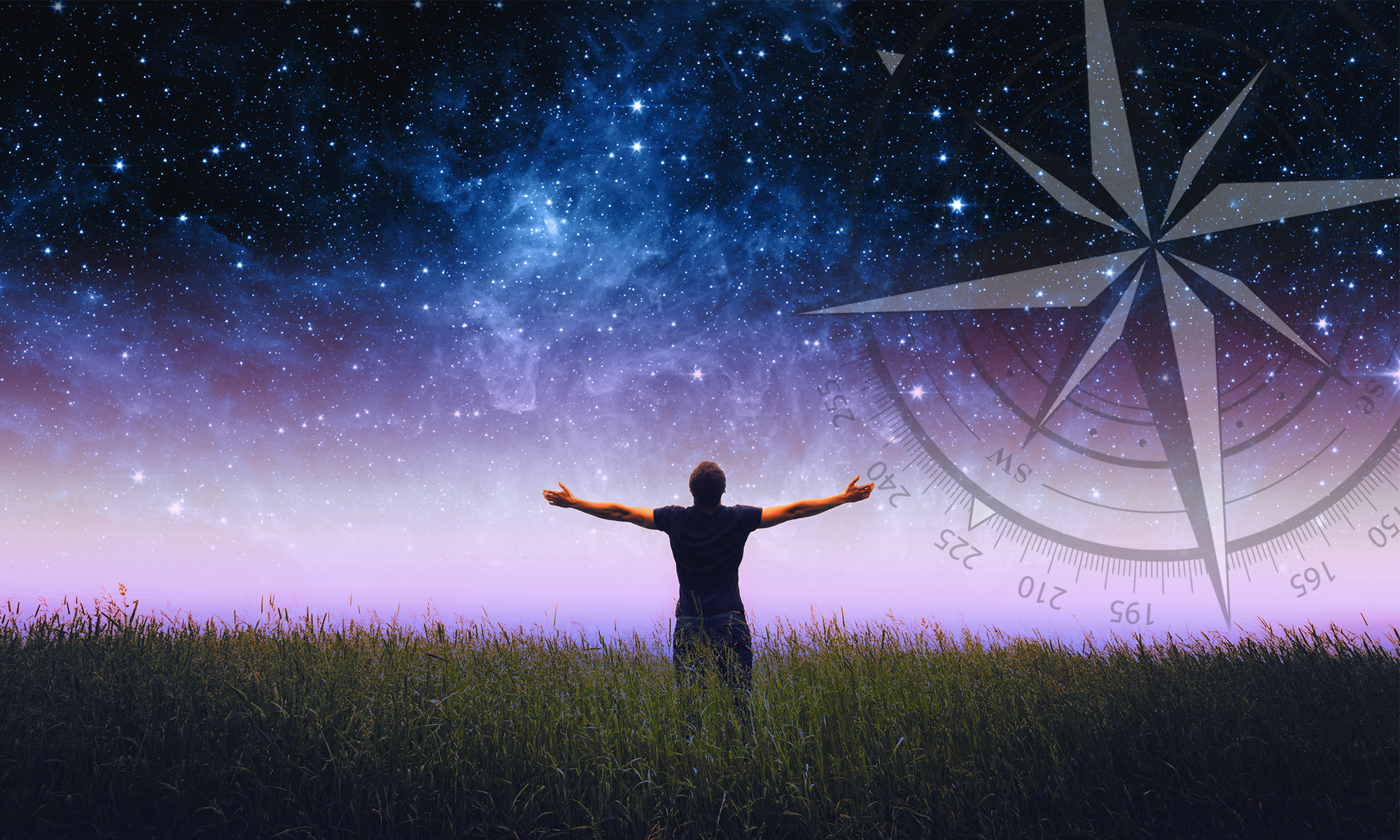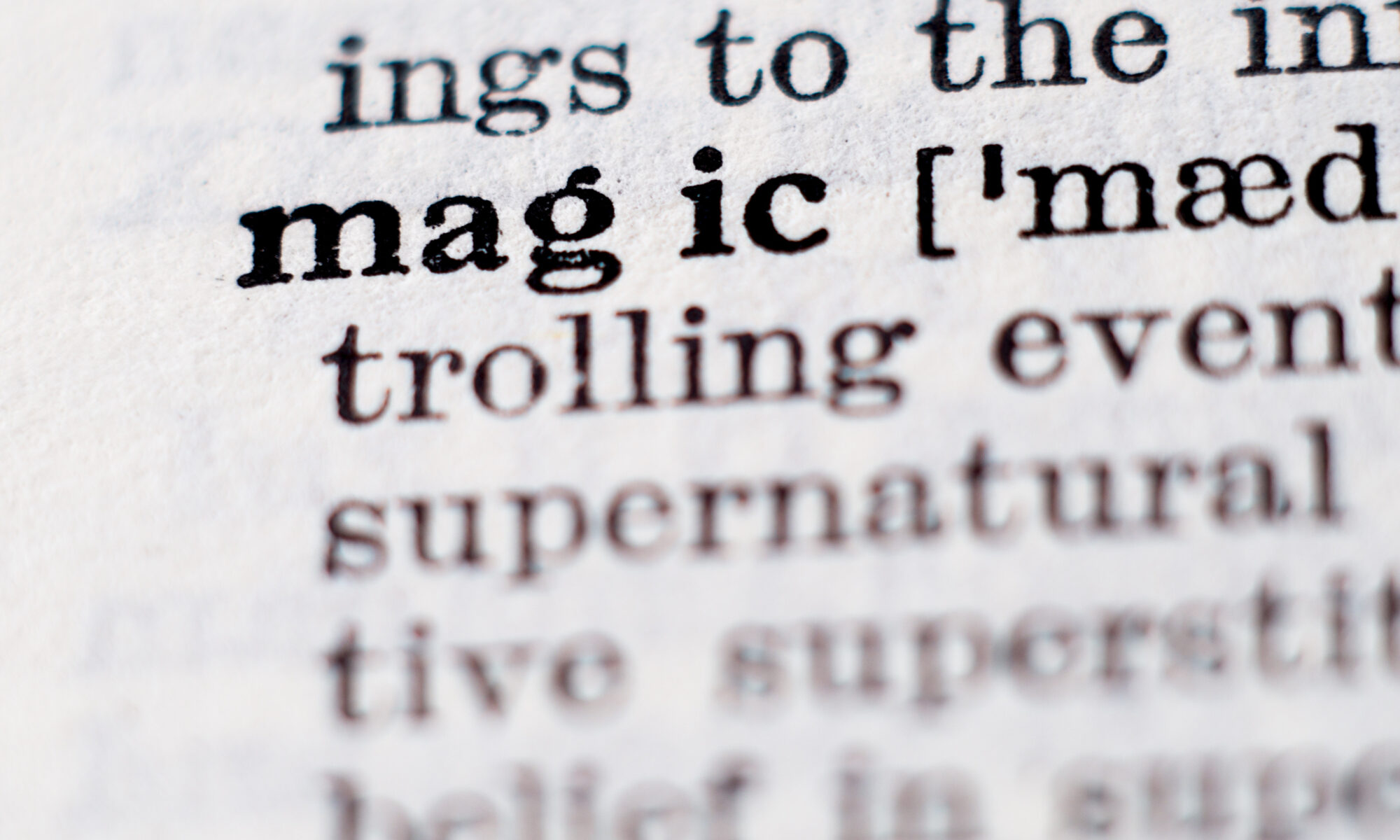*This post was originally formed as a research paper at Arizona State University for REL 307 to discuss magic and religion’s comparative nature but has been modified to include the authors’ opinion.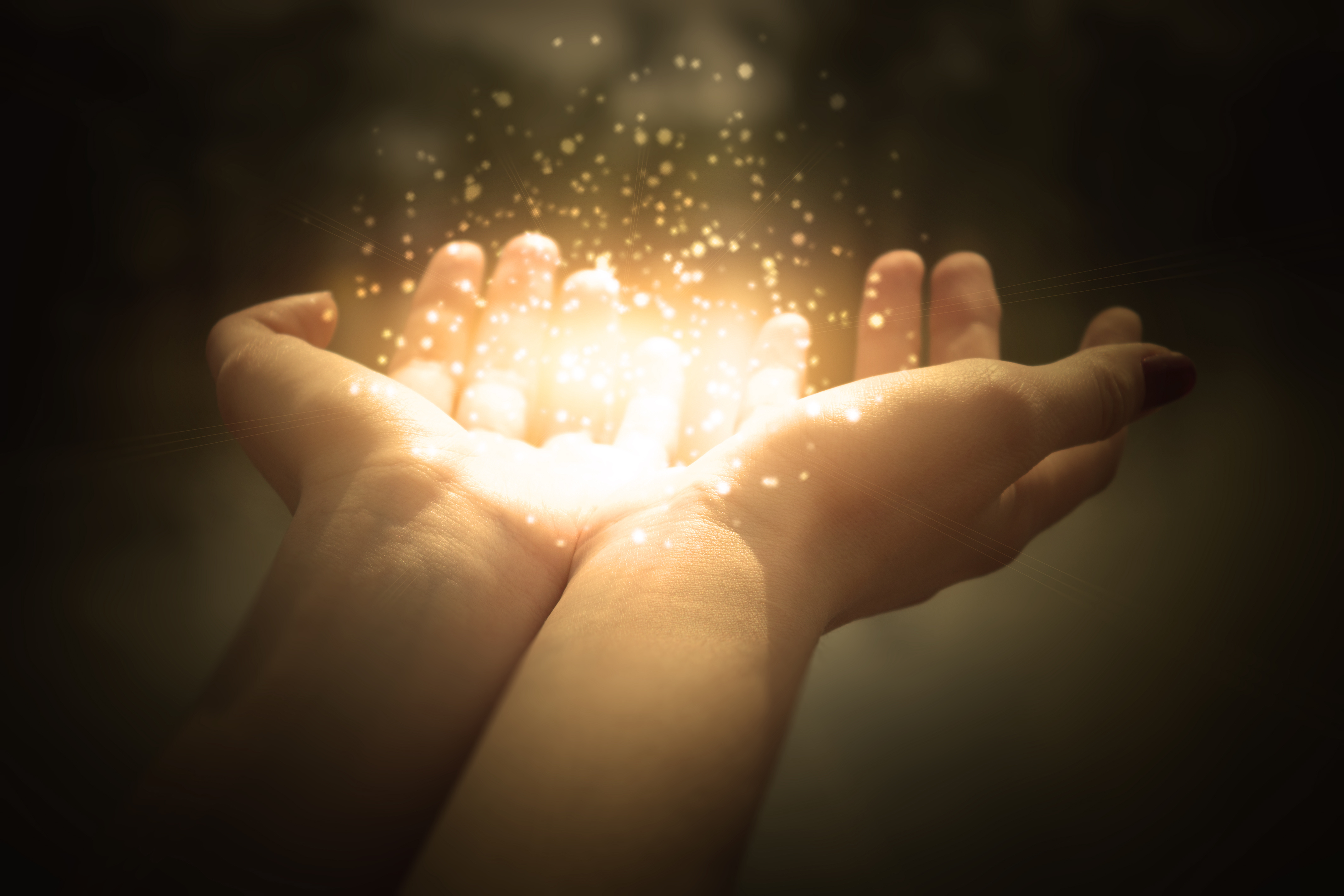
Comparing magic with concern to religion implies separating their purposes, characteristics, and expression of existence upon each other. As the term of religion is used to look at the past by scholars, the functional understanding of magic is primordially used by cultures before the written text to discern the future. Therefore, the comparison between the two may end up being a reduction of the same design.
To understand if these two terms, magic and religion, are interchangeable in purpose, we need to establish what they have served in meaning through history from various perspectives. Equally, we must place a preliminary timeline of conception in the development of human intelligence and social behavior concerning both magic and religion. Has magic perpetually existed in our history, but because of religion become second nature by our actions? Or is religion the very act by which magic can exist? As social sciences and other ancient cultures use modern expressions to pin down religion’s purpose, the opposite direction flows with understanding magic. Magic today is a very different concept than what it was thousands of years ago. Religion by current understanding in the Western world has made magic childs play.
The twenty-first-century idea of magic is closer to the fourteenth-century Middle English usage of the word found first in Chaucer’s work as ‘magique‘ but starkly different from the Old Persian word ‘magus,’ isolating a group of people by abilities. Hearing the word alone has probably made you think of dark corridors illuminated with candles and cloaked warlocks with pentagrams hanging from their necks. Or if you’re me, you’d see the halls of Hogwarts awaiting your arrival. That is not this kind of magic.
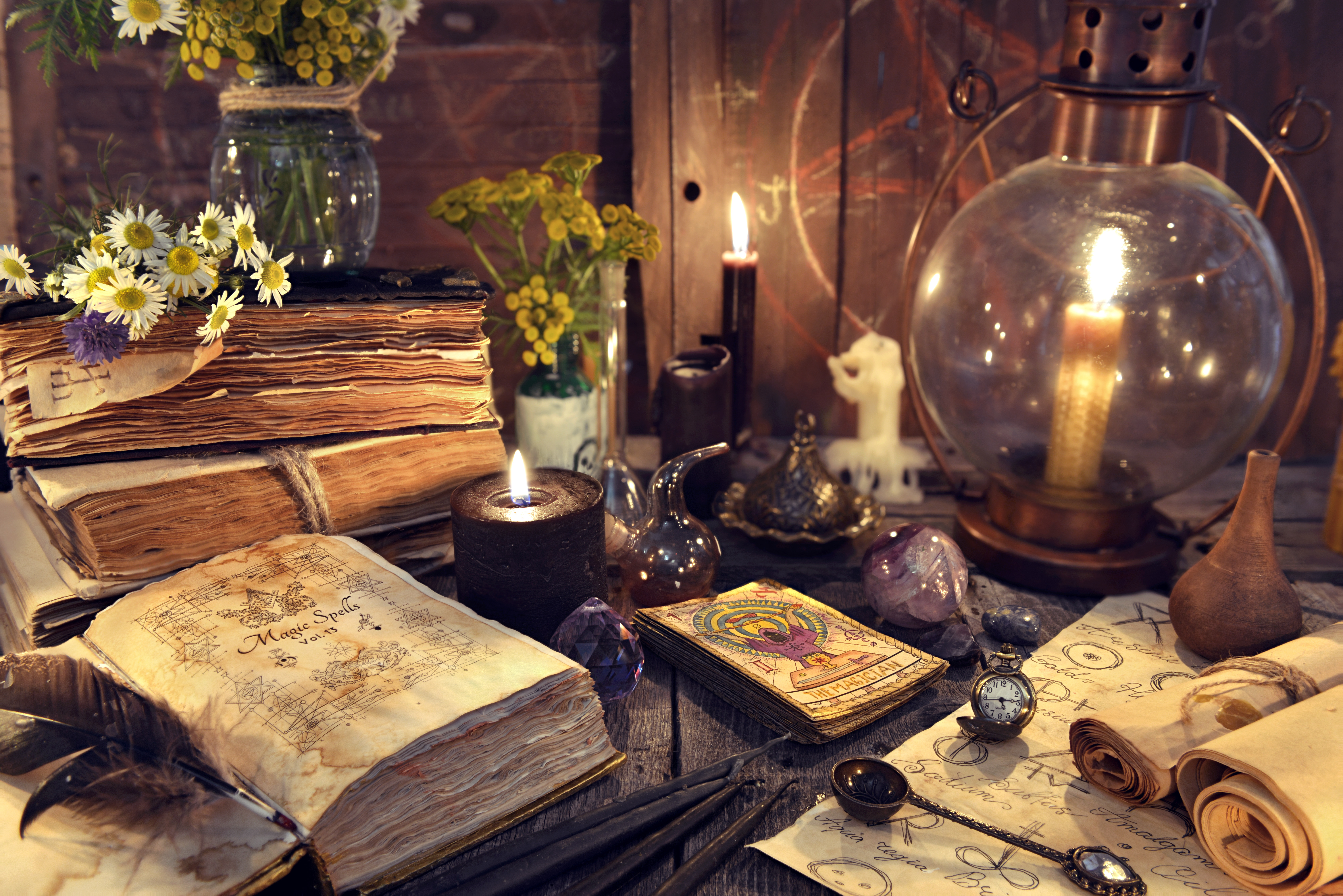
Today’s interpretation of magic is divided into numerous forms of discipline. Magic found around the world can be purchased, watched, practiced, or experienced. From the stage illusionist who entertains crowds in Vegas to the practicing witches who can buy their occult paraphernalia online, the word magic appears fantastical when viewed as theatrical. The taboo ideas came when placed near religion and described as imaginary. For the church, particularly the early Christian movement, magic was a word that came to divide good and evil. Now, especially with the church’s primary purpose to get people to Heaven, there is no place for evil or magic (Collins, 2005).
Archeologist Andrew Wilburn defines magic as a mechanical form of rites that draw on religious practices and exoticized forms of religion for personal ends. Basically, he says magic is the machine that uses religion to produce its goods, good or bad. Wilburn’s example of this religious machine plugged into a magical outlet is liken to an exorcism, healing, cursing, or whatever the user desires. The movies have shown us how a priest pulls the demons out and heads spin or healing by clergy with a mere touch; both would be a positive form of magic that the church has claimed to use. Still, having trouble getting the image of magic as not part of religion?
Examples of ancient magic come in many ways that humans used to sustain everyday life and communicate with a world not our own. Cave drawings to us seem fairly familiar now, but many have
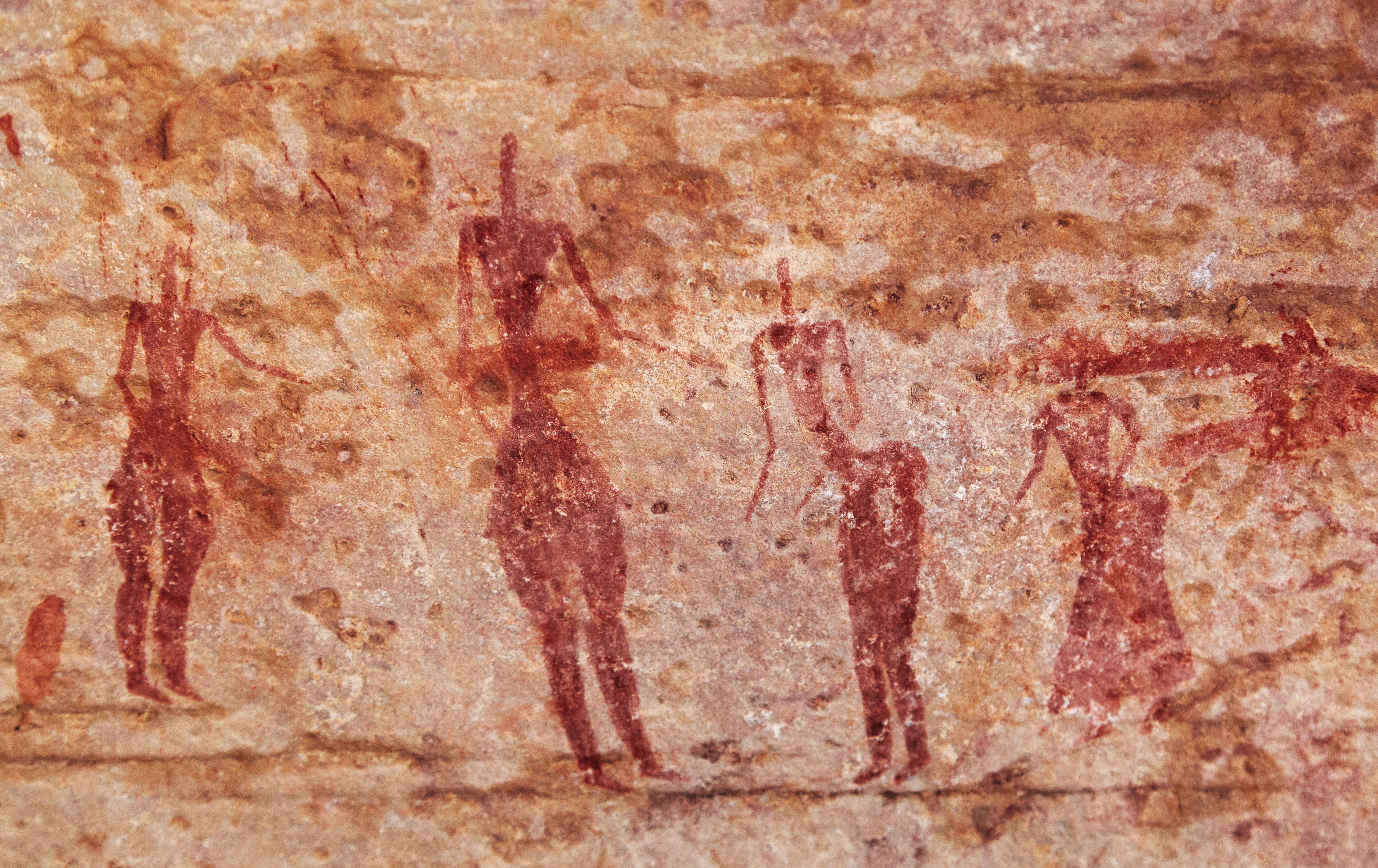
depictions that scholars can only guess to their meaning. The ancients drew images not only of beings not seen in nature, but they had geometric shapes that indicate the human capacity to see past the world around them, but how? Statues of unnatural beings have also been found in the excavation sites across every continent. Archaeological digs have produced bowls with circular writing spiraling around as if chant repeated. Places that intrigue us, like Stonehenge with the purposeful placement of massive stones carried hundreds of miles, are found worldwide. Yet, history tells us nothing of the power the ancients were trying to manipulate. Instead,, people like Wilburn, who addresses religion’s behavior to use magic, also attach the word ‘weird’ to describe the objects found accompanying these puzzling sites throughout the ages.
Were these sites used for magic? Is there a way to test whether they did to solidify a purpose in history?
As mentioned before, magic’s etymology comes from a long line of other similar sound words like magus in the Old Persian form. Mag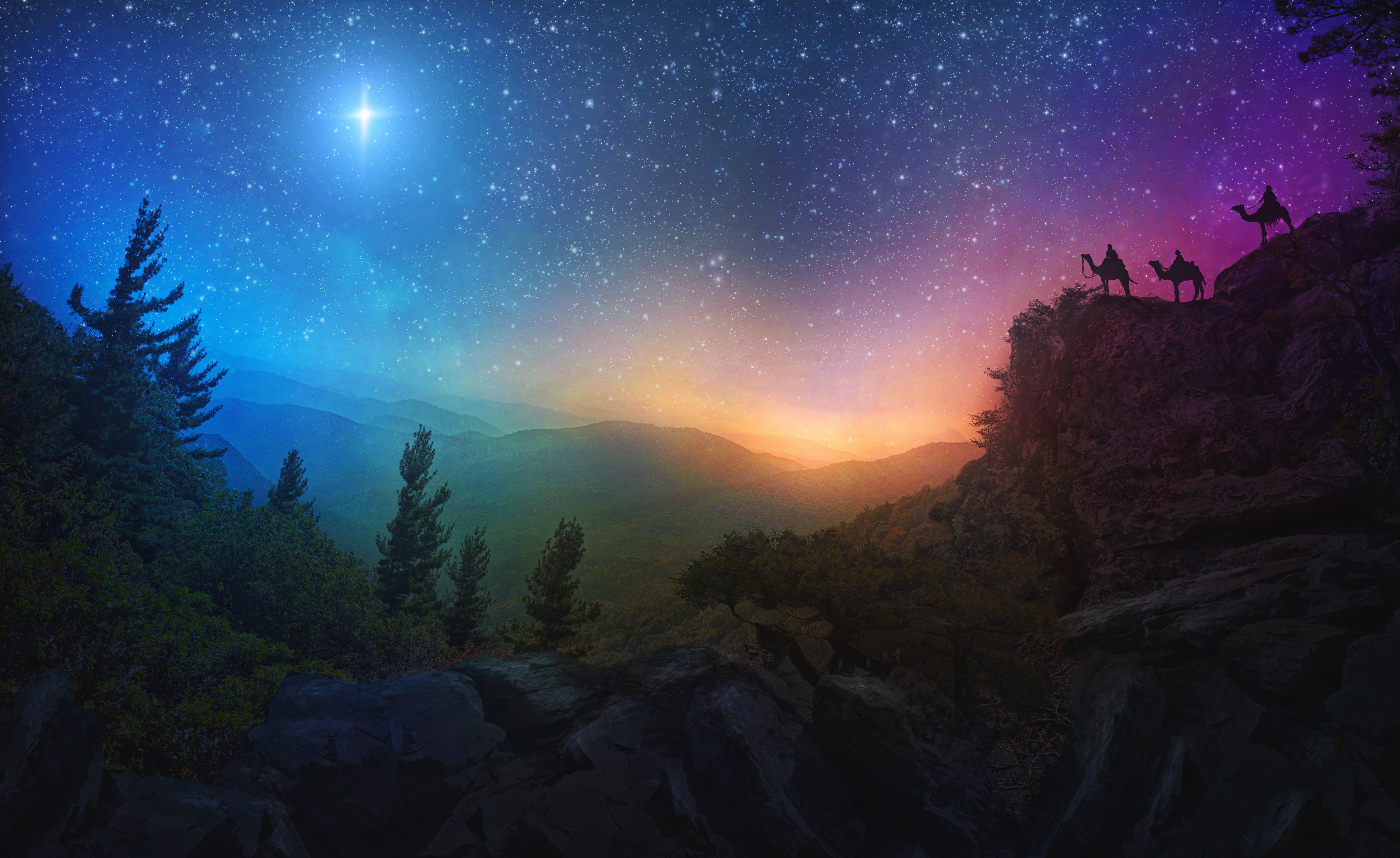 us, or magi, was a reference to a priestly caste of men of the Zoroastrian faith. These were men who dealt with the cosmos and read the stars to predict the future. Do you think that’s crazy? What if I told the world magi was later changed in the Bible to kings or wise men, and there were three of them? If you’re a Christian, these guys were three primary characters from the east to locate the baby Jesus.
us, or magi, was a reference to a priestly caste of men of the Zoroastrian faith. These were men who dealt with the cosmos and read the stars to predict the future. Do you think that’s crazy? What if I told the world magi was later changed in the Bible to kings or wise men, and there were three of them? If you’re a Christian, these guys were three primary characters from the east to locate the baby Jesus.
Antiquity’s magic should be defined as a broad power, the mysterious energy that was, and possibly still is, functionally available to everyone but manipulated or tapped into by select people in historical religion. From this point forward, magic as a noun will be referencing a supernatural force that exists everywhere. It is unseen other than by its results through religion. However, religion is not what you think it is, sorry. Bringing the discussion of what religion is by comparison.
The study of religion has been relatively new in contrast to the practice of magic within civilizations. Here we are talking about the science of studying religion and putting a title on it, not the world of religion we are 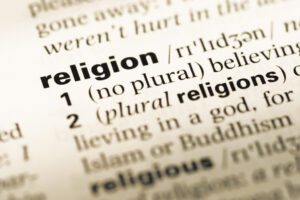 actually trying to connect to magic. Nevertheless, the etymology of magic came forth from antiquity, whereas religion is being placed upon scholars’ groups. As ethnographic fields of study shows, primarily in anthropology, the results of findings have a context to who we are and what has influenced our observations. For example, suppose we are raised in a supernatural system that shows no proof of God other than the mind’s manifestation of faith. In that case, it is likely we may decide later to follow science that produces visible results. Thus, religion becomes a primitive narrative to human evolution and lacks reason, as anthropology scholars like E. B. Tylor regarded religion. Giving light to the context of how scholars and we see other’s actions not objectively in a broad scope can change the sheer meaning of words, like religion and magic.
actually trying to connect to magic. Nevertheless, the etymology of magic came forth from antiquity, whereas religion is being placed upon scholars’ groups. As ethnographic fields of study shows, primarily in anthropology, the results of findings have a context to who we are and what has influenced our observations. For example, suppose we are raised in a supernatural system that shows no proof of God other than the mind’s manifestation of faith. In that case, it is likely we may decide later to follow science that produces visible results. Thus, religion becomes a primitive narrative to human evolution and lacks reason, as anthropology scholars like E. B. Tylor regarded religion. Giving light to the context of how scholars and we see other’s actions not objectively in a broad scope can change the sheer meaning of words, like religion and magic.
The faiths of a Christian, Jew, Muslim, and Hindu are charted by rising numbers on a chart based on categories, created by many non-religious anthropologists. These large world faiths do not follow the same teachings within their own titles, but outsiders set them apart to study. For example, within Christians sects, one would find believers of One God, yet also you find others who extent that to a triad dimension as Father, Son, and Holy Spirit. Is that one religion or two? By the same category of religion, Hinduism is the most diverse. In this particular scope, Hinduism can follow One God or several gods, and many of the practices believers’ adhere to are for personal development, varying by region or family. Hinduism can be dispersed as monotheistic and polytheistic at the same time. So why are these sects grouped as one religion? It cannot be the nature of how their God(s) came into existence because that is debated throughout the culture. Possibly the Vedas, their original scriptures, tie them as one. 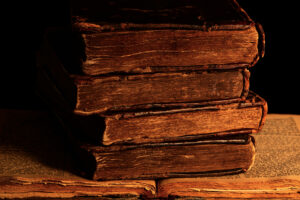 But, they later divide in philosophy and do not equally accept the Vedas. If it’s the original of scripture, then Judaism, Christianity, and Islam should all be one under Abraham’s ordination of religion, but it is not. As well, all four of these faiths have a text about a massive flood in history, maybe they’re all connected in other ways, and the separation created by applying the word ‘religion’ makes them distant from each other.
But, they later divide in philosophy and do not equally accept the Vedas. If it’s the original of scripture, then Judaism, Christianity, and Islam should all be one under Abraham’s ordination of religion, but it is not. As well, all four of these faiths have a text about a massive flood in history, maybe they’re all connected in other ways, and the separation created by applying the word ‘religion’ makes them distant from each other.
Therefore, when archeology finds prewritten evidence of rituals, like burial sites, ceremonial dishes, geometric notations, and zoomorphic statues, was there a religion that far back in history? Or does the term only describe what is seen modernly broken apart by human autonomy after written words? Religion is a broad description used to identify the language and actions used to transform an unseen power that affects the world. From this point, religion will only refer to the acts, artifacts used, language, and believed outcomes concerning all things, not a specific group.
Now, how do the two interact?
The once dismissible notion of magic understood to produce material psychological gains unconnected to religion has expanded to include it. Nevertheless, we need to know how people used religion and magic in their daily lives in the past. Ere the written word, humans left behind evidence of symbolic rituals (religion) that may show their belief in more than what was seen (magic).
Archaeology has uncovered gravesites across the world that show a change in the emotion of sorts for the dead. In 1968, in Sungir, Russia, the bones of one adult and two children dating thousands of years before any written text, were discovered buried with handmade jewelry (Bosinski, 2015). Shells with worn-out holes imply they were strung together at one time.
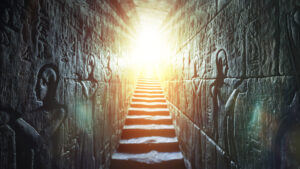
The importance of beading seems overlookable, but in this era, one jewel, or shell in this example, could take an hour to make one, and these three bodies were put to rest with thousands of beads in each grave. Many similar sites have been found with tools and other ornaments left with the dead. If these people were primitive, why would they spend time making jewelry to cover it with dirt? Is it possible for a similar reason, people continue to bury our dead and often leave mementos for them in their caskets? Egyptians took the lead in burying their dead with treasures and carefully bottled organs claimed when the dead came back. What did the ancient people witness that made them think the dead were coming back?
Burying the dead with respect because of a belief in an energy that surpasses death or an afterlife would be the religion to respect that magic. Archaeology agrees that more bones buried with adornments and care demonstrate respect paid for the dead and a belief in life beyond death (Bégouen, 2015). Even further back than the oldest burial site discovered, a zoomorphic statue was found in a German cave in 1939 of the Lion-man, head of a lion and body of a man. Artifacts like these show that humans had the brain capacity to imagine intermixed creatures not found in nature and that they were not savages worried solely about daily demands. Maybe what we perceive as imagination today was a reflection of what the first humans witnessed between worlds.
These visual references of beings morphed as human and animal extend into the lore of world cultures as big as Christianity and Hinduism, to the isolated legends found throughout Africa and South America. Some are divine beings in the stories, while others hold the representation of evil’s presence. However, they seem to exist in a different dimension unless they choose to manifest to those who have created the stories or called upon by humans through specific ways. This would be an example of religion accessing magic. Bringing us to a crossroads of magic being a source of both good and evil, and where we need to look at how, or the religion, local civilizations tried to access these powers.
Evidence through archaeology and anthropology provides that religion (as an action) was tied to men and women who tried to tap into an invisible force to expose truth and lie, good and bad, even perpetuating life past the veil of death. In a sense, magic was, and to some still is, an immortal essence that could be spoken to and used to bring or stop fertility, predict or invoke natural disasters, cure or create ailments, and use curses for those who deserve penance of right or wrong.
In modern churches, like Christianity, astrology is no longer a part of the Bible teachings and nixed by all accounts to find God. However, as mentioned before, the Iranian and Old Persian word magush, or a priestly caste, is linked to groups of men in the Zoroastrian faith who were given the connotation of magicians’ magi. At a period in history, it is thought that the three magi, who came from the east were Zoroastrian priests who used astrology to find the Christ baby and bring him gifts. It was the church who tried to severe the link of magic with this story and its relationship to God. Yet, kept the identity of Jesus as a healer, an understanding of how to manipulate magic. Later to bring the resurrection of Lazarus and later his own body, magic as the immortal force of life.
The Jewish text, along with the Christian, Muslim and Hindu canon of scriptures, are littered with these types magicians being involved with ancient practices. Now astrology borders the occult of science and respective sciences of space travel. Healing is translated to doctors and pharmacists. Bad results are due to our own fault and not the workings of witchcraft. Or at least that’s how the Westernized version of religion without magic is practiced. There are still cultures that believe and incorporate the stars, signs, healing and curses as part of the world. To them it is not a named religion, but a way to use magic in their lives.
As mentioned before, religion and magic involve inanimate objects, like ritual bowls and cerimonial beads. There are more used throughout more recent history like wands, crystals, totems, and reflective surfaces for scrying that have a theatrical appearance but we quite important to those who used them before television. Even the simple act of letting a book open, reading the page it land on to answers sought after outcomes is the magic of bibliomancy. Priests by nature is a fo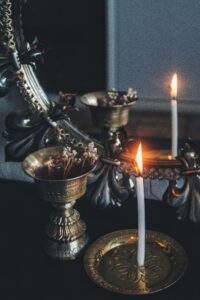 rm of cleromancy. Finishing with those who are tasked or are known to interact with the dead, are necromancers. These make for great fiction stories today, but all have a deep history in antiquity and tie religion to magic as two separate constructs for one purpose: the physical and the invisible. Mathematician and philosopher John Dee used crystals in the sixteenth-century to attempt gazing between dimensions to see angels for Queen Elizabeth I and her court (Harken, 1994). So, what happens when magic inserts itself into a realm outside of the tangible world and consciousness, like in dreams? Of course, one could bargain that dreams are fantasies of what we desire manifesting while we sleep, but in ancient times, people were given titles like prophets and seers when they could interpret others’ dreams or foresee the future in visions of their own.
rm of cleromancy. Finishing with those who are tasked or are known to interact with the dead, are necromancers. These make for great fiction stories today, but all have a deep history in antiquity and tie religion to magic as two separate constructs for one purpose: the physical and the invisible. Mathematician and philosopher John Dee used crystals in the sixteenth-century to attempt gazing between dimensions to see angels for Queen Elizabeth I and her court (Harken, 1994). So, what happens when magic inserts itself into a realm outside of the tangible world and consciousness, like in dreams? Of course, one could bargain that dreams are fantasies of what we desire manifesting while we sleep, but in ancient times, people were given titles like prophets and seers when they could interpret others’ dreams or foresee the future in visions of their own.
In the Tanak, Old Testament, and Quran, there is a story told of Joseph, son of Jacob, presented as the dream interpreter. After being sold into slavery by his brothers, and spending some time in jail, Joseph is brought before Pharoah. Joseph had created a reputation in jail as knowing what dreams fortold. His ability to understand Pharaohs’ dream saved the people of Egypt and the line of Abraham. The word dream itself can find itself on the seesaw of good and evil, just like any other magical concepts. These magical actions like dreams, and the ability of interpretation, require nothing more than the mind, therefore making the religious artifact a human. Is there something inside us that hold a magical residue?
Some cultures believe our bodies have a portion of divine essence stored within. Some are able to manifest its powers easily, people designated as a priestly caste in ancient times, or magicians by our definition. Making the purpose of religious artifacts like statues, ritual bowls, and other items, to be used for the human experience with magic more amplified. For example, teachings found in Hinduism express that every person has a piece of God within them. This divine essence in every Hindu can be connected on a personal level with the cosmos of God(s) and amplified through puja, which is their core ritual of worship. They use idols to focus their gaze and hope to find a connection with the one they worship. Seems very similar to prayer in the Abrahamic faiths, only without and idol…per say. Debatable if the crucifix and the star od David count as idol symbols. Nevertheless, human find ways to focus on the divine realm to communicate with what is on the other side, thus magic.
Henri-Alexandre Junod, a missionary and anthropologist in Africa, stated that ‘magical axioms were in an arena of forces…they belong to unwritten conceptions,’ and he positions magic in a struggle with religion (Chidester, 2014, p.163). However, this notion of magic, as shown so far, is not absent from religion, nor is the idea that they conflict with each other present throughout history. Antiquity presents how people became aware of magic and created more ways to access it in their daily lives. The struggle appears to be the human factor when it was decided by the church to remove portions of rituals out of the people’s hands and casting a full shadow of evil on anything touching the word magic.
Magic, as we have lightly touched, is not all good, therefore the church may not have been wrong to cast shadows on various parts. Many structural ruins left by cultures have left behind sacrifice residue, both human and animal, on altars and in their artwork. For whatever the reason, blood sacrifices show that humans had decided what they killed was to be used for more than food and that the blood had power. Did their God(s) explain there was power in the blood and some took it to extreme measures?The story of Cain and Abel speaks of Abel’s blood crying out even after Cain hid his murder scene. Later as the Israelites are given commandments, all 613 of them, blood is apart of purity and should not be spilled. What is it with blood?
Long before science could show us the microscopic structure of DNA and its power to create life, ancient cultures looked at blood as sacred. Some even took advantage of this power and sacrificed the beings standing at the top of the food chain, humans. Kings and influential people used dark magic to intimidate fear in history.
One person’s religion is another’s black magic.
As mentioned, early Christians moved away from the association with magic, bringing the dawn of men who became interested in picking up the occult, or the magic of manipulating the natural world. These were our early scientist who had one foot in the church and one foot trying to find alternate forces. In turn, magic did not cease to exist, and neither did religion by how we have defined it. The practitioner pool has grown to include scientists. We do not bat an eye to use manufactured ingredients for pharmaceuticals, a job once performed by witch doctors and healers. Mystic healers have used magnets and magnetic forces for thousands of years, but science is now manipulating those powers in MRIs to see inside the body to preserve life. Science is a new artifact trying to tap into the unexplored, not as a replacement for what civilizations were doing before the Enlightenment era, but as its equal. The comparison in this blog is not about magic and science, but rather religion and magic. Religion is essentially the action of magic in the visible world, whereas magic exists as a positive and negative force available for anyone to use, including science. Therefore, religion,, as an act to manipulate cannot exist without magic, but magic being a force not dependent on religion, can exist alone.
To sum it all up, our universe is made possible by a force we have yet to understand fully or blanket by one definition. 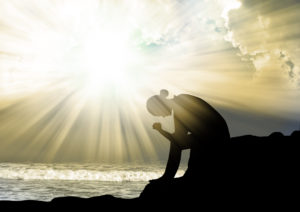 However, when we hear the word magic, don’t assume you’re watching a movie anymore, but instead you are interacting with the very essence that brought the world into existence. For those that believe in spiritual beings, magic is where these energies reside, and it is our souls that connect to them. In turn to answer the first equation, can religion exist without magic, the answer is no.
However, when we hear the word magic, don’t assume you’re watching a movie anymore, but instead you are interacting with the very essence that brought the world into existence. For those that believe in spiritual beings, magic is where these energies reside, and it is our souls that connect to them. In turn to answer the first equation, can religion exist without magic, the answer is no.
Bibliography
Bégouen, Count. “The Magic Origin of Prehistoric Art.” Antiquity 3, no. 9 (1929): 5–19.
Bosinki, Gerhard. “Remarks on the Grave Above Burial 2 at the Sungir’ Site (RUSSIA).” Anthropologie (1962-) 53, no. 1/2 (2015): 215-19. Accessed November 25, 2020. http://www.jstor.org/stable/26272524.
Buss, Martin J. “On the Definition of “Magic.” Current Anthropology 6, no. 4 (1965): 469-71. Replies by Murray and Rosalie Wax. http://www.jstor.org/stable/2740349.
Chidester, David. “Ritual and Magic.” Empire of Religion: Imperialism and Comparative Religion Chicago: The University of Chicago Press, 2014.
Collins, David J. The Cambridge History of Magic and Witchcraft in the West: from Antiquity to the Present New York, New York: Cambridge University Press, 2016.
Dalton, Rex. “Lion Man Takes Pride of Place as Oldest Statue.” Nature 425, no. 6953 (September 4, 2003): 7–7.
Deane, Jennifer. A History of Medieval Heresy and Inquisition. A History of Medieval Heresy and Inquisition. Lanham, MD: Rowman & Littlefield Publishers, 2011.
Ennemoser, Joseph. The History of Magic: Theoretical Views of Magic Among the Ancients. Translated by William Howitt. Selections by Mary Howitt. New Hyde Park, N.Y: University Books, 1970.
Harkness, Deborah. “The Scientific Reformation: John Dee and the Restitution of Nature.” ProQuest Dissertations Publishing, 1994.
Lang, Andrew. Magic and Religion. London: Longmans, Green, and Co., 1901.
Larsen, Timothy. “E.B. Tylor, Religion and Anthropology.” The British Journal for the History of Science 46, no. 3 (2013): 467–85. doi:10.1017/S0007087412000039.
Livingston, Ira. Magic, Science, Religion Leiden. Brill Rodopi, 2019.
Magliocco, Sabina. “Introduction: The Ethnography of Magic and the Magic of Ethnography.” In Witching Culture, 1–. University of Pennsylvania Press, Inc, 2011.
Merriam-Webster.com Dictionary, s.v. “magic,” accessed November 28, 2020, https://www.merriam-webster.com/dictionary/magic.
Perry, W. The Origin of Magic and Religion. The Origin of Magic and Religion. England: Methuen, 1923, 1923.
Seligmann, Kurt. Magic, Supernaturalism, and Religion. [1st ed.]. New York: Pantheon Books, 1974.
Wallace, Dale. “Rethinking Religion, Magic and Witchcraft in South Africa: From Colonial Coherence to Postcolonial Conundrum.” Journal for the study of religion 28, no. 1 (January 1, 2015): 23–51.
Wilburn, Andrew. Materia Magica: The Archaeology of Magic in Roman Egypt, Cyprus, and Spain. Materia Magica. Vol. 9780472028689. Ann Arbor: University of Michigan Press, 2013.
Winkelman, Michael. “Across the Boundaries of Belief: Contemporary Issues in the Anthropology of Religion; Religion and Magic: Approaches and Theories: Across the Boundaries of Belief: Contemporary Issues in the Anthropology of Religion; Religion and Magic: Approaches and Theories.” American Anthropologist 102, no. 2 (June 2000): 380–382.
Winston, David. “The Iranian Component in the Bible, Apocrypha, and Qumran: A Review of the Evidence.” History of Religions 5 (2) (Winter): 183. 1996. http://login.ezproxy1.lib.asu.edu/login?url=https://www-proquest-com.ezproxy1.lib.asu.edu/scholarly-journals/iranian-component-bible-apocrypha-qumran-review/docview/1297290258/se-2?accountid=4485.
